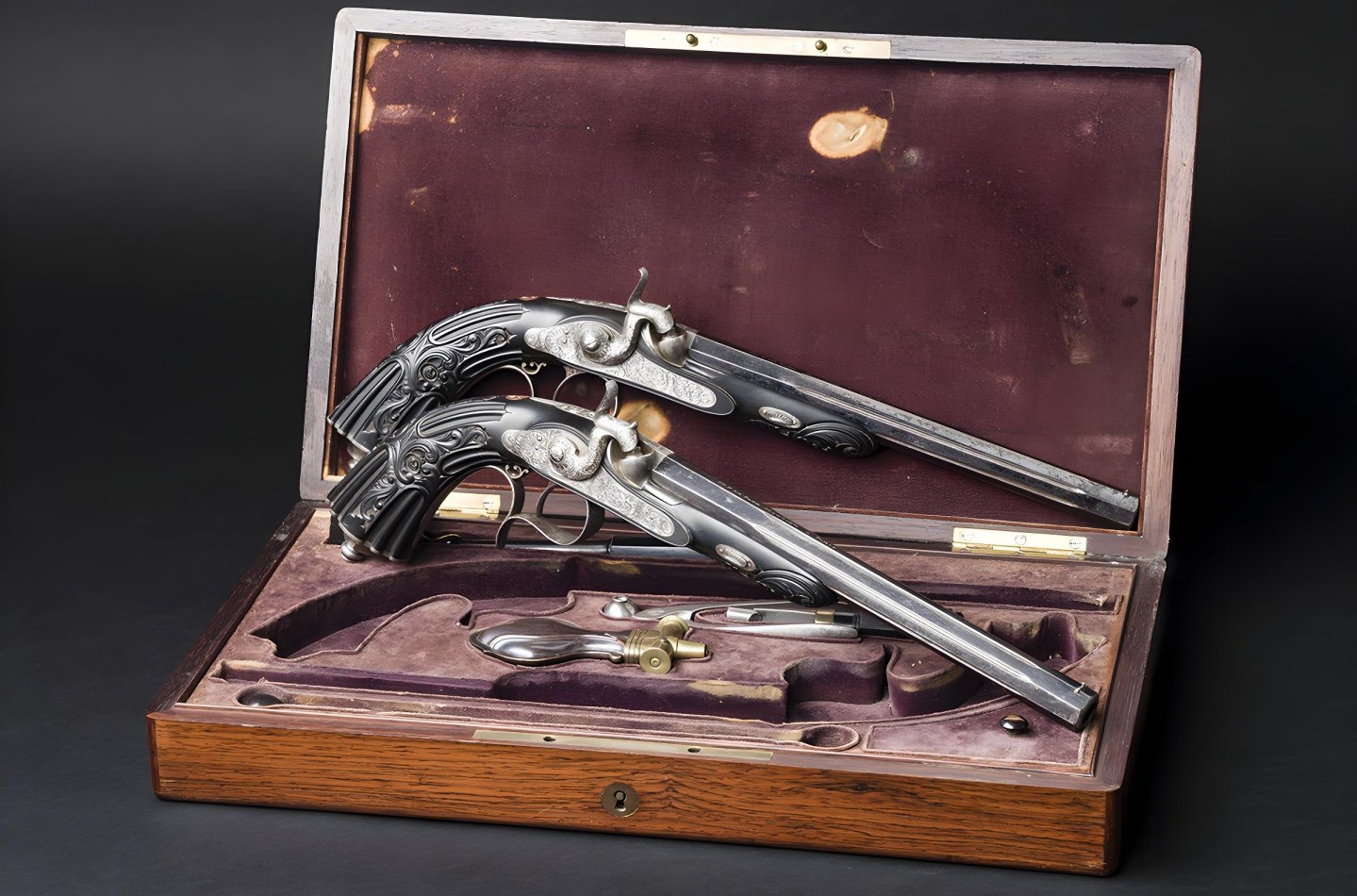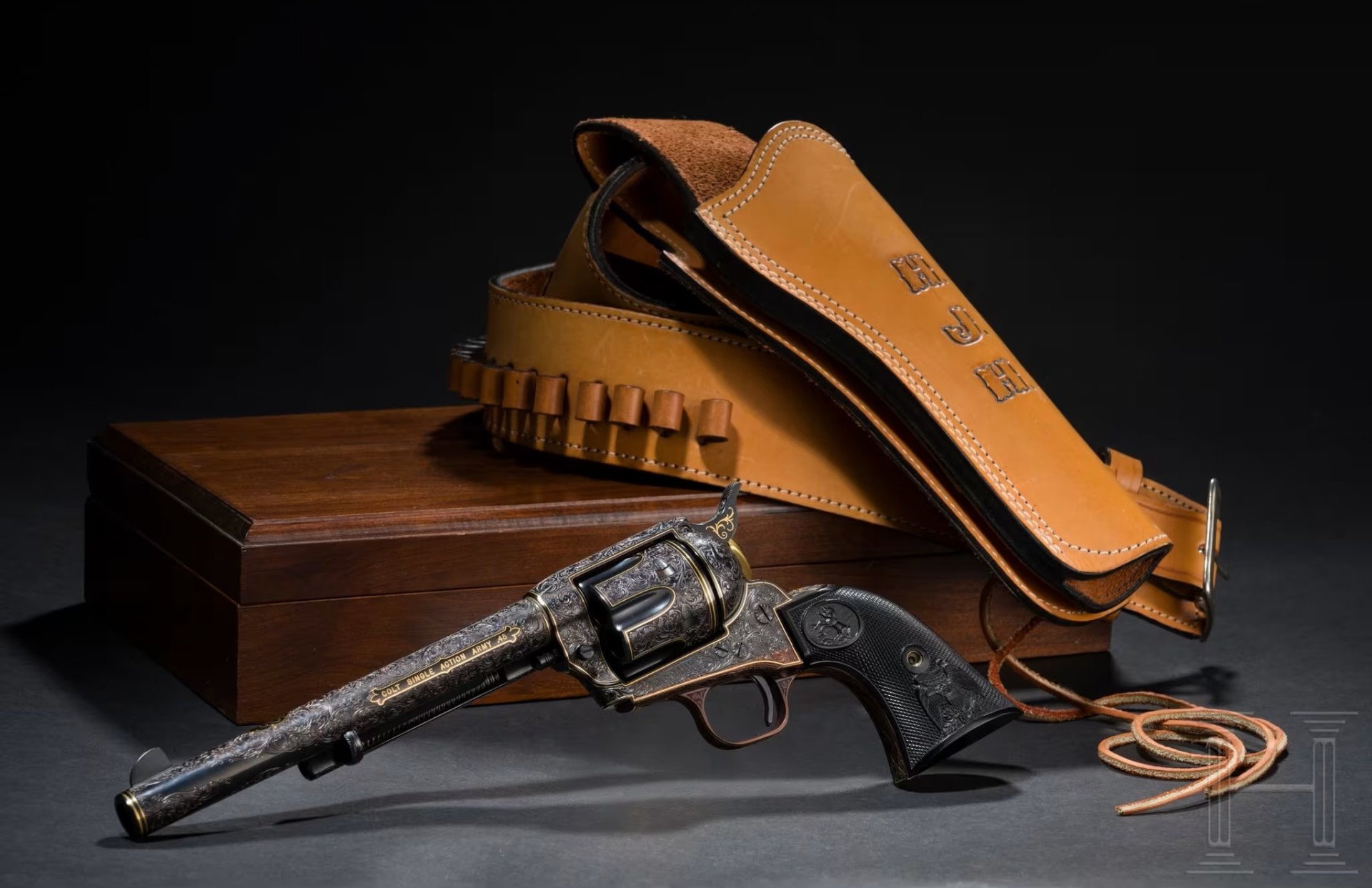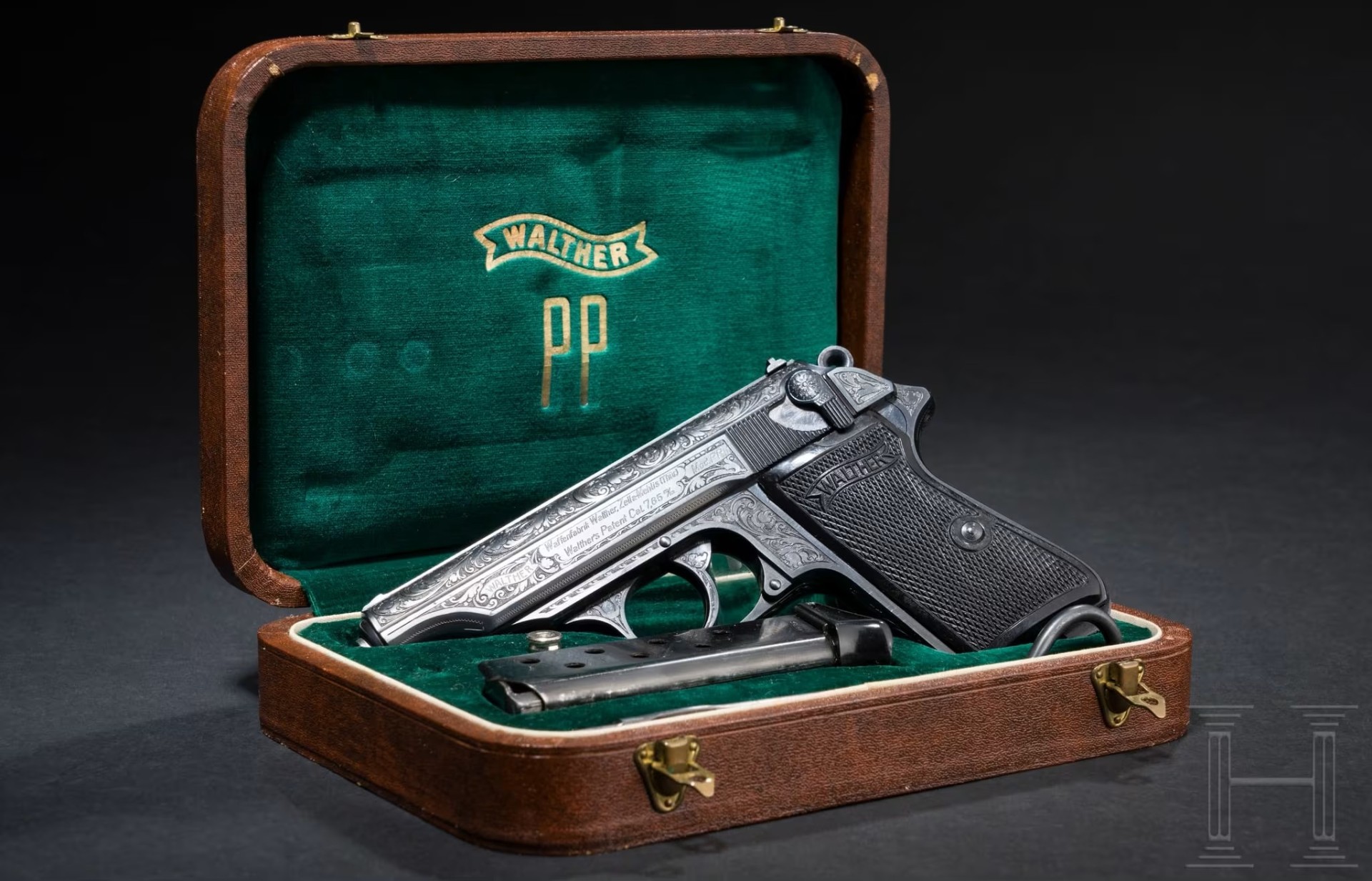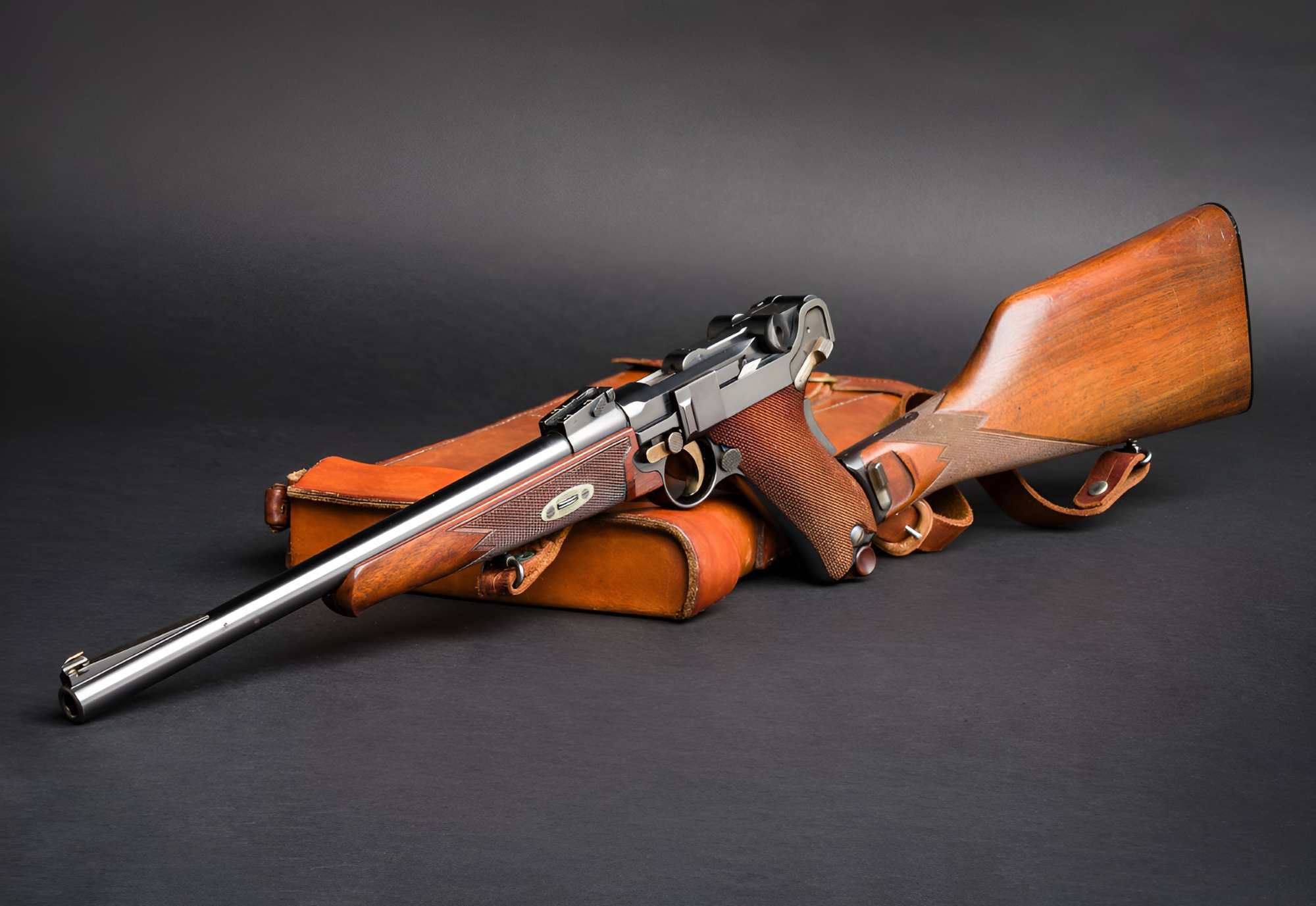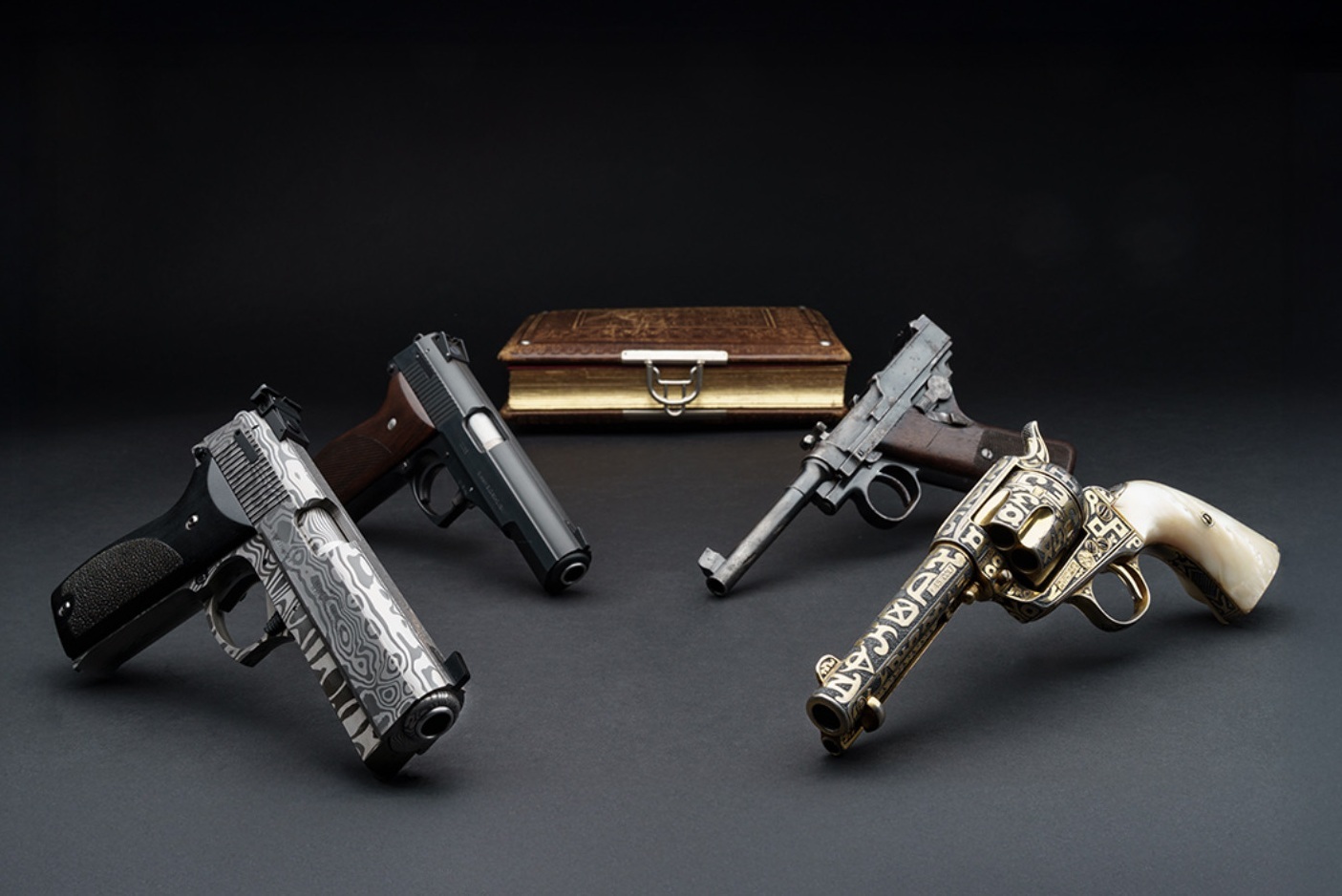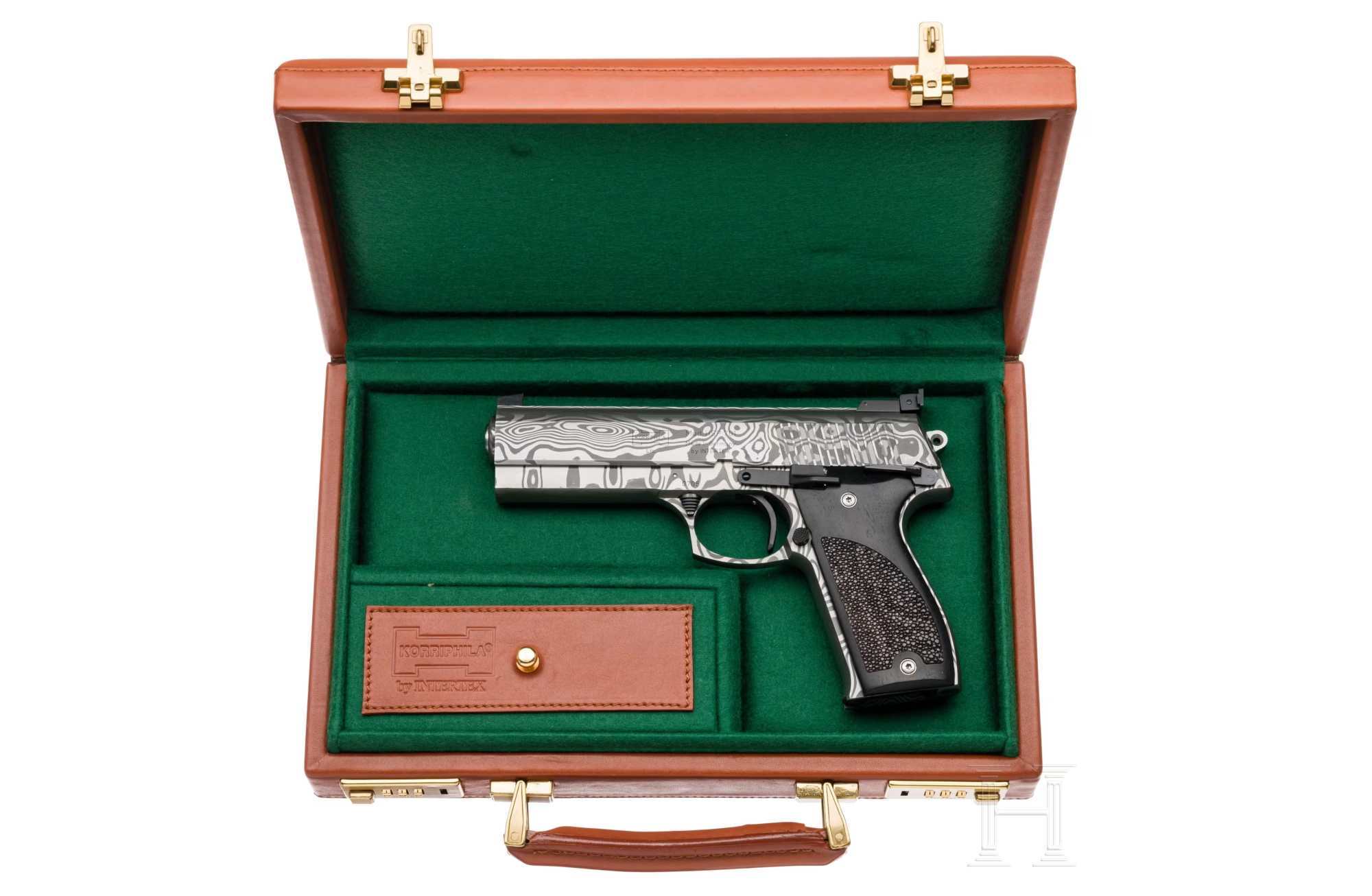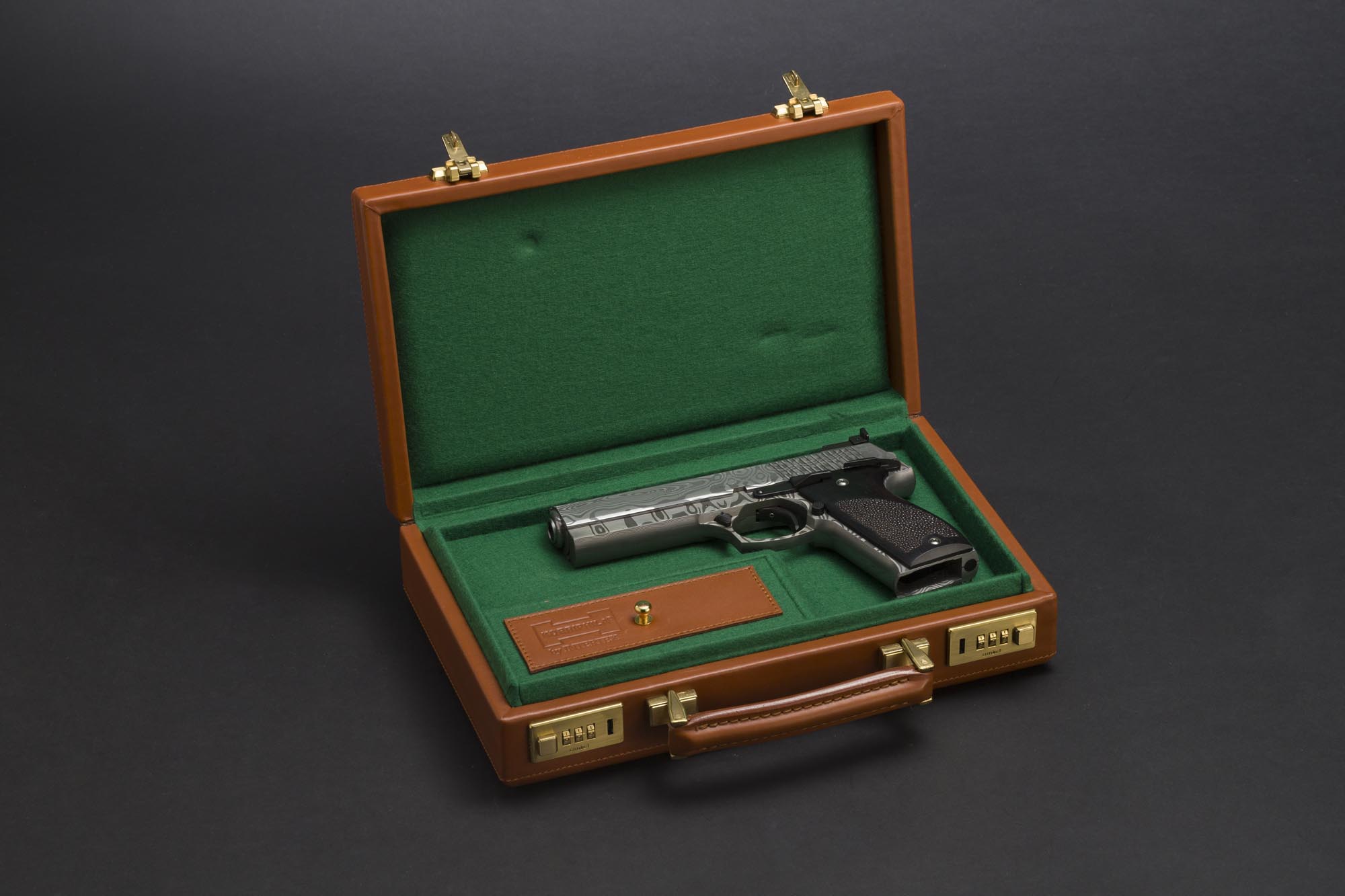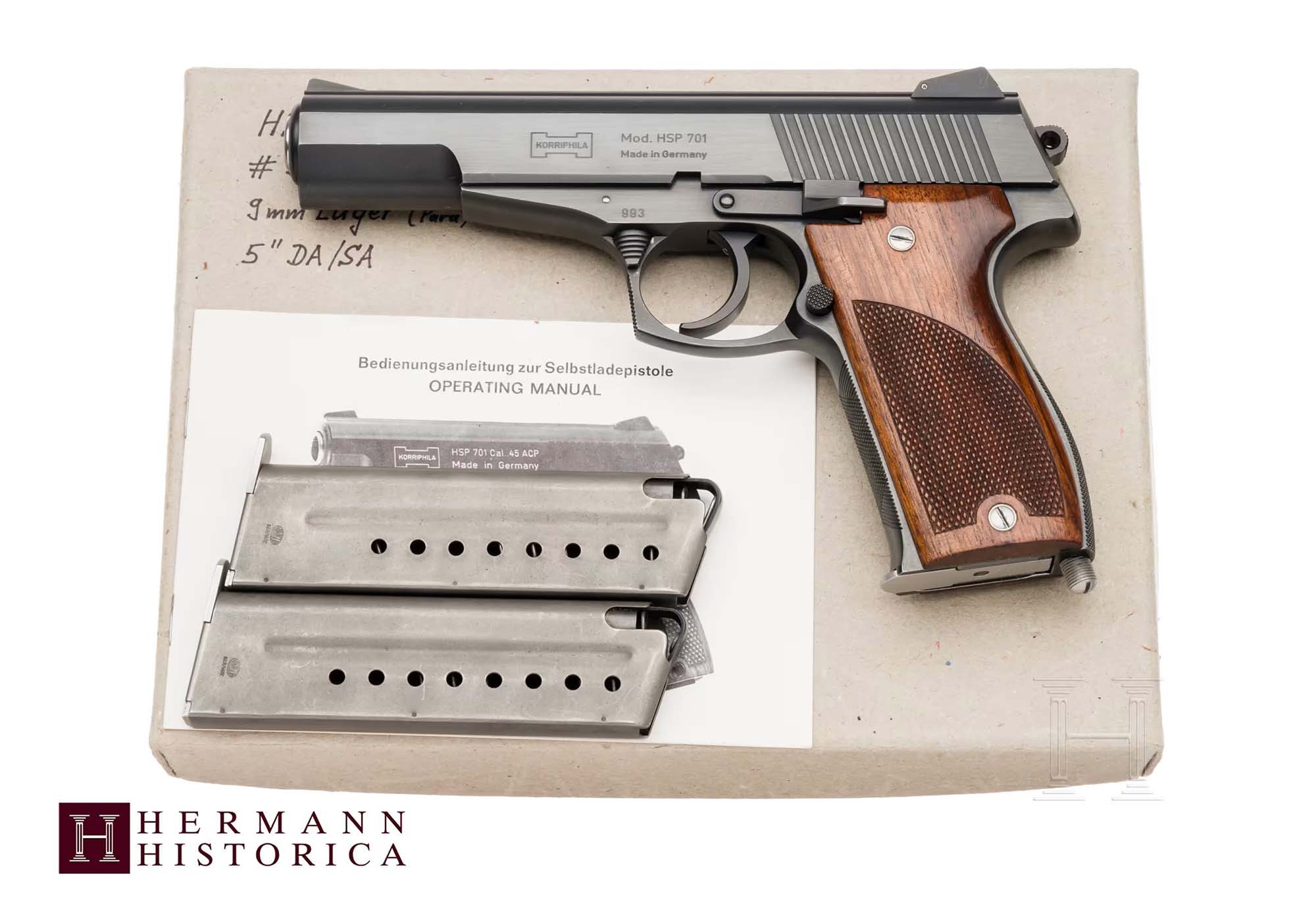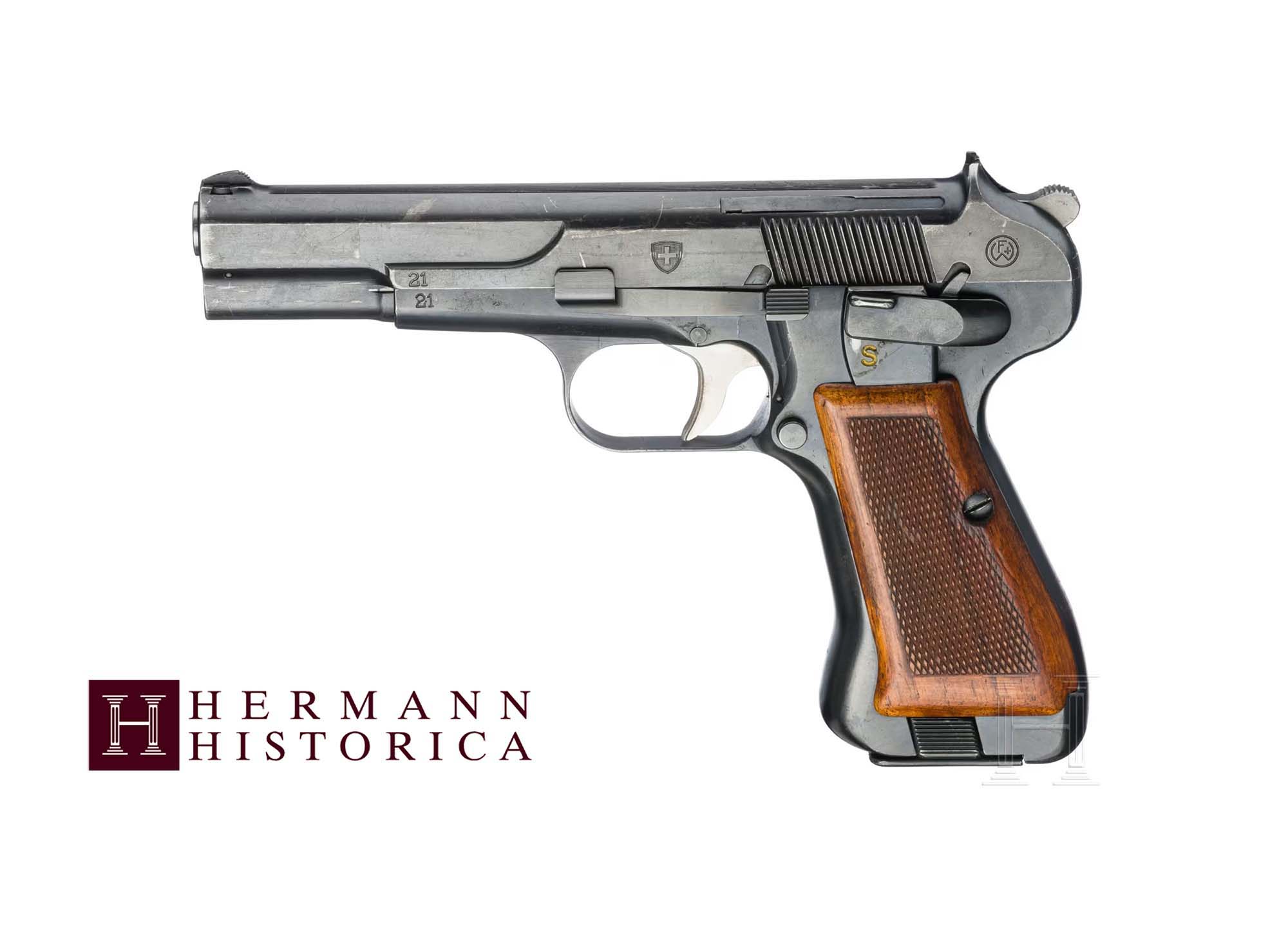We are rapidly approaching the date of the "Fine Antique, Historical and Modern Firearms" auction organised by the Bavarian company Hermann Historica, and as usual we have been reviewing the online catalogue published a few days ago to identify the most promising and interesting pieces for collectors. The auction will take place on 24 July 2025 and can be watched live at Hermann Historica's physical location in Grasbrunn near Munich, Germany, or online from 10 a.m. To find out all the details, just follow the link to the Bavarian auction house's website, which you will find at the bottom of this page.
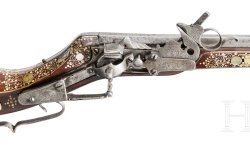
Among the lots for sale in the first part of the catalog, the one dedicated to the oldest guns, number 20 stands out: this is a fine small wheel-lock arquebus dating back to the mid-17th century. The smooth bore octagonal barrel has a slightly flared muzzle and is in 9.5 mm caliber. As was customary at the time, all visible parts of the lock are engraved; on the trigger spring cover we find a delightful reclining doe. The stock is made of walnut with a bone nosepiece, featuring fine inlays of polished and blackened bone and mother-of-pearl depicting wild animals, hounds and mythical creatures. On the sides of the buttstock, two inlays depict St. George on horseback fighting a dragon and on the other side, a hunter fights a boar with a spear. The patch box has a spring-catch and sliding lid. The rifle still has the original wooden ramrod with bone tip. Length 112 cm. This lot is an admirable example of the Tschinke, or small arquebus, a typical firearm from Silesia, more precisely from the town of Teschen in present-day Poland. This highly decorated and refined type of gun was very popular among the wealthy nobility in a historical period from the mid-17th to the early 18th century. To acquire this marvel you will need at least 10,800 euros: this is the starting price set by Hermann Historica.
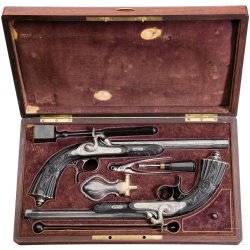
We continue with a stunning lot: under catalogue number 167 we find this sumptuous pair of percussion pistols by Le Page Moutier à Paris with ebony stocks. The two pistols were made between 1848 and 1868, have octagonal barrels with twelve-groove rifling in 11 mm caliber, externally fluted, with the signature "Fni P Le Page Moutier a Paris" on the top. Tangs and breechlocks are decorated with fine floral ornaments; here we also find the numbers "1" and "2". Front action locks, delicately engraved with vines and blossoms and signed "F. P. Le Page Moutier". The stock is ebony and on the thumb plates we find two red gold medallions with the crowned initials "G P". Length 40 cm. One pistol has slight traces of rust on the barrel and the front sight is broken. In a wooden case, lined in blue velvet, containing all accessories (the key has been lost). A monogram cartouche engraved with the crowned initials "G P". Le Page Moutier, son-in-law of (Jean André Prosper) Henri Lepage, took over the business in Paris in 1842. This lot, which perfectly represents the golden age of French gun-making in the mid-19th century, has a starting price of €5,000.
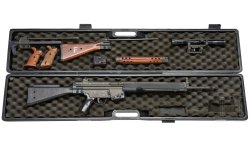
Lot 1052 is a Schwaben Arms SAR 97, i.e. a civilian, semi-automatic only version of the Heckler & Koch G3 assault rifle in 7.62x51 (.308 Winchester). This civilian version retains the most attractive features of the original weapon, such as the roller delayed locking system, phosphated military finish and polygonal barrel. The gun is fed from five-round sheet metal magazines. The serial number is B0131 and the year of production is 1999. This is a rifle that is already quite rare in itself, but what makes it very attractive to the collector is the accessories that accompany the lot, starting with the Zeiss Diavari DA 1.5-6 scope with No. 4 reticle and the stock with adjustable cheek pad that are those of the SG1 marksman version. The rifle comes with the original wooden stock set, the telescopic metal stock and two different sport grips made by specialist Nill. The rifle is in good condition, with mirror-polished barrel bore and only a few signs of time. The rarity of this lot is also due to the fact that original accessories are now unavailable on the market. The starting price for this collector's piece is 5,500 euros.
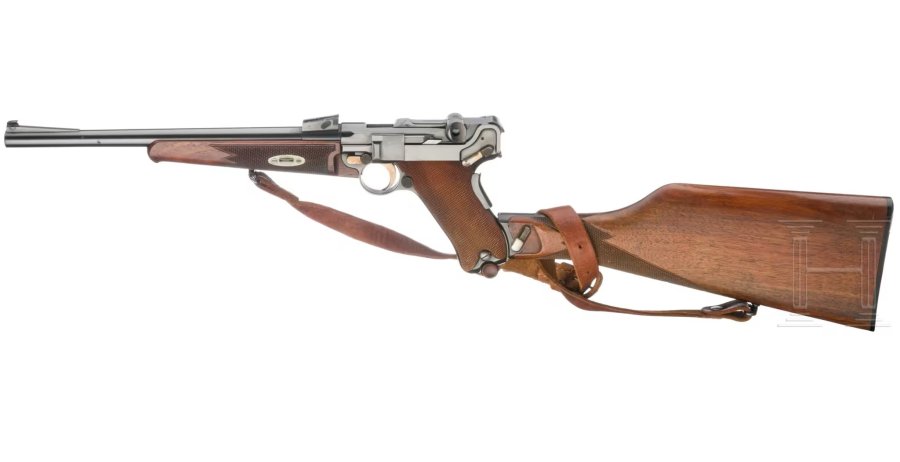
A great collector's classic, this time in a strictly vintage version: a DWM 02 Luger Carbine, especially when accompanied by a matching serial number detachable stock, is not seen every day. The example on auction at Hermann Historica with lot number 1087 is in 7.65 Luger and has the serial number 24425, which places its production in 1902 by Deutsche Waffen und Munitionsfabriken. The gun has the original bluing, with only some small patches of rust on the barrel, and walnut grip panels in perfect condition, considering that it is over 120 years old. The detachable stock bears the same serial number as the pistol and is still complete with the original leather carrying strap. The barrel measures 30 centimetres, with a ramped, side-adjustable front sight and adjustable rear sight. The starting price set by the experts at Hermann Historica is 9,500 euros.
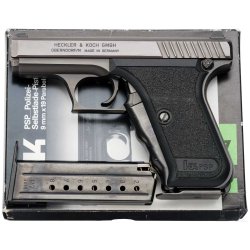
With lot 1104, the Heckler & Koch fever continues. We are in fact in the presence of an H&K PSP in 9mm Luge with serial number 447. This is the famous pistol designed by Heckler & Koch at the end of the 1970s, featuring an innovative gas-delayed blowback system and grip cocking mechanism. The PSP, whose acronym stands for "Police Semiautomatic Pistol", was slightly modified after being manufactured in a few hundred examples and became the Model P7. This makes specimens with the original designation highly sought after, and in recent years we have seen an exponential increase in collectors' interest in this mechanically very interesting and original pistol (like most Heckler & Koch designs are) that was once relegated to the curiosity cupboard of armories. The example for sale in auction number 105 has the 1979 civilian proof marks and the three-dot sights typical of the period. The cardboard box and grips bear the PSP designation. The magazine is a single-stack eight-round type and there is also a spare magazine in the box. The polygonal barrel is 103 millimeters long. The starting price for this lot is 4,000 euro.

Karl Nedbal is an Austrian gunsmith known as "the Master of Conversions" and from his workshop come absolutely special guns such as Lot 1234, a faithful handmade reproduction of the world's rarest pistol, the Luger pistol in .45 Auto. It exactly reproduces the legendary Luger pistol in .45 ACP that was tested by the US Army in 1907, which later led to the adoption of the Colt 1911. According to official firearms literature only two examples were built, with serial numbers 1 and 2, the first of which was lost after testing. Karl Nedbal's replica is in fact machined from solid billets, and has been built in an unspecified but very limited number of pieces. The one on auction at Hermann Historica has the serial number 2001 and is accompanied by the lockable oak box. The magazine is single-stack, with a capacity of seven rounds, and every detail of the Luger in .45 is meticulously reproduced, starting with the very special trigger and the automatic safety on the grip. It may be a replica, but it is still a rarity and a great conversation piece for enthusiasts. The starting price is 4,500 euros.
Lot 1613 is a breechloader percussion pistol pair made in 1852 by Ludwig Sauerbrey of Zella. It is a perfect example of a transitional "semi-breechloading" pistol. The powder charge and bullet still had to be inserted into the barrel in this order and from the front, but thanks to a joint in the frame, the chamber could be loaded directly. The barrels have an octagonal outer profile and are in 15.7 mm caliber. The hammer of these guns has an unusual ring shape. The lower parts of the frame bear the signature 'L.Sauerb.' and the numbers "1." and "2". The length of each pistol is 43 cm. These pistols, originally equipped with a detachable shoulder stocks and a longer barrel, were probably used as interim guns by the Prussian border gendarmerie after 1864, as approximately 8 cm of the barrel was sawed off and the Holstein gendarmerie's identification mark was removed. As a result, the shoulder stock, which was originally part of the gun, was no longer needed. Together with his brother Valentin, gunsmith Ludwig Sauerbrey won a medal at the World Exhibition in London in 1851. In total, only 200 examples of these percussion pistols were made. The pair of pistols is accompanied by an associated double saddle holster with cartridge cases. The leather adaptor of the holster pair with the saddle attachment has been lost. The starting price for this odd pair is 5,000 euros.
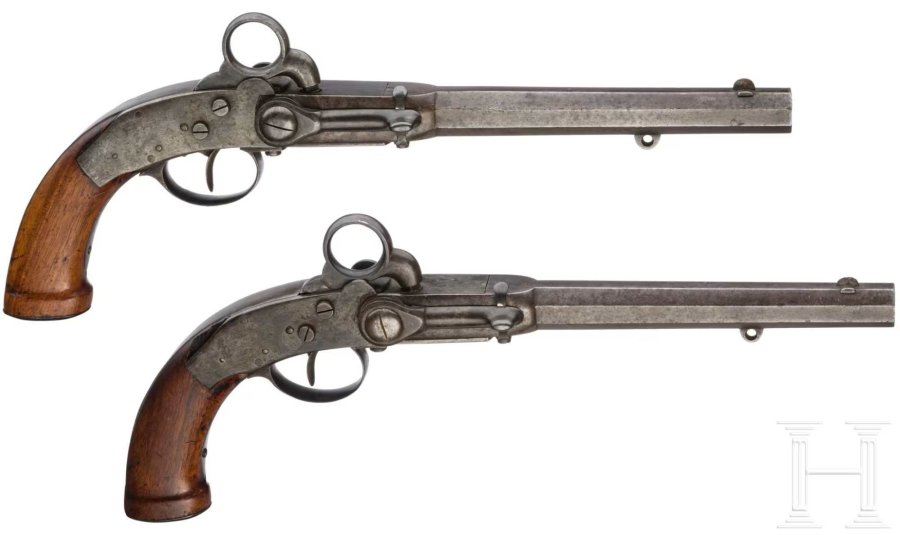
We conclude our preview here, leaving you to browse through Hermann Historica's auction catalogue 105 to discover all the gems it conceals. Enjoy!
To find out more please visit the Hermann Historica website.


